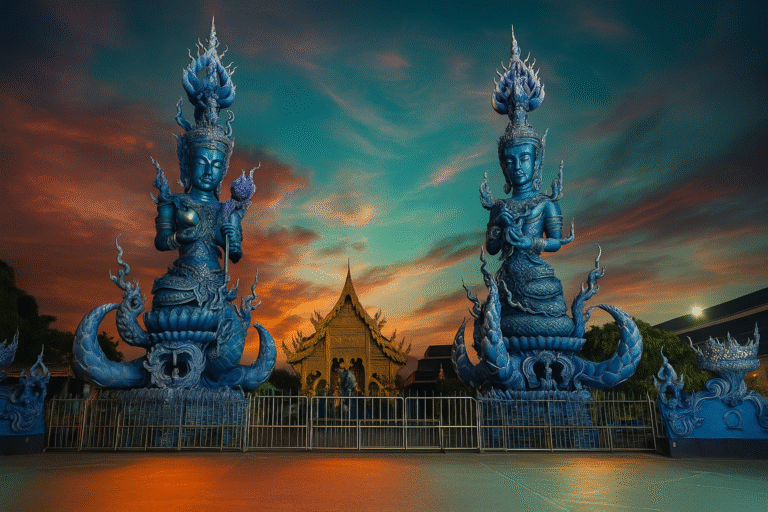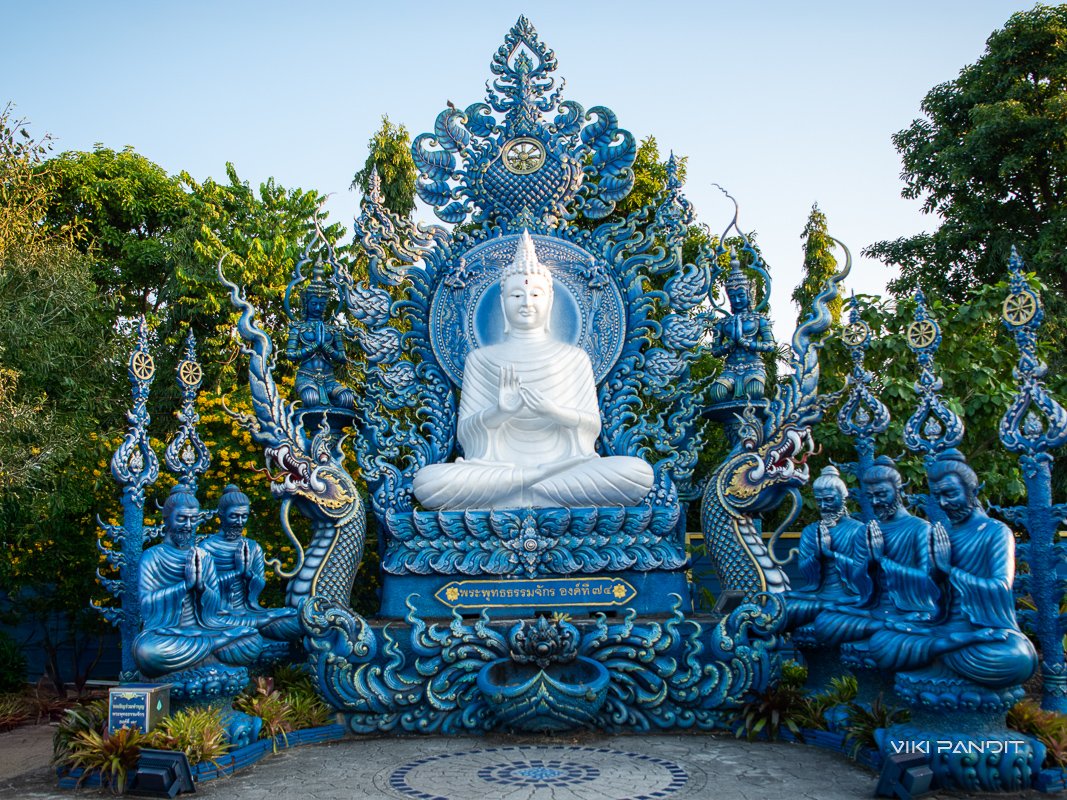Nestled in the far northern reaches of Thailand, where the mountains seem to breathe slower and time stretches out lazily, lies Chiang Rai — an unassuming city that feels like a secret revealed only to those willing to wander off the well-trodden paths. It’s a place that exists in the quiet between the clamor of Bangkok’s streets and the more popular, bustling charms of Chiang Mai. Founded in 1262 by King Mengrai, Chiang Rai once served as the first seat of the ancient Lanna Kingdom—a history whispered in the shadows of its temples and the slow, winding riverbanks.
There is a stillness here that seeps into your bones, a gentle, hypnotic rhythm shaped by morning mists curling around wooden shophouses, roadside vendors smiling with weathered warmth, and the soft chime of temple bells echoing through the haze. The city breathes an old, almost mystical charm — a charm that whispers of time’s slow passage, of stories etched into every stone, every leaf.
Today, my journey was simple: to witness the Blue Temple, officially called Wat Rong Suea Ten, a modern marvel spilling with vibrant life against the quiet backdrop of tradition. I’d read that at twilight, this place shines with an otherworldly glow, its deep indigo hues deepening as the sun slips behind distant mountains. With my camera gear — my trusted Nikon, a sturdy tripod, and two prime lenses, one 35mm and the other 24-70mm — I set off with Mani, riding a worn tuk-tuk through quaint city lined with tamarind trees and papaya groves, the air thick with the scent of flowering trees and Myanmar’s distant hills.
As we approached, the temple’s silhouette materialized—a bold, majestic shape painted in shades of deep blue, standing out against the evening’s dying light. It’s called the “Temple of the Dancing Tiger,” a name steeped in local legend, where tigers once roamed free near the Kok River, leaping across the water like spirits of the forest. The temple’s origins trace back to an older, crumbling relic, but what stands today is a work of contemporary devotion, born from the vision of Phuttha Kabkaew—an artist whose ambition was to craft a space where divinity and artistry entwine. It opened to the world in 2016, a young yet timeless sentinel of faith and creativity.
The grounds are quiet, almost reverent, yet alive with an energy that seems to pulse from its vibrant blue walls. With my camera, I begin to capture the scene: the main hall, glowing in an ultramarine that seems to absorb the sky itself. Rich gold filigree dances across its surface, serpentine naga guardians curl skyward, and the air hums with beauty and purpose. Blue, an uncommon choice for Thai temples, symbolizes purity and wisdom—an outward expression of the Dharma that seeks to transcend the physical and touch the infinite.
Inside, the white marble Buddha — Phra Buddha Ratchamongkol Bodi Trilokanat—stands silent and imposing, surrounded by murals that swirl between traditional stories and surreal modern imagery. It’s a visual feast, a fusion of old and new, spiritual and artistic. I spend long moments trying to catch the shifting light, shadows flickering across shimmering blue walls, each shot a quiet prayer of appreciation. One particular frame, where naga serpents twist around the entrance, waiting patiently, feels like a secret gift.
As evening deepens, the temple transforms. The golden hour bathes it in amber, and lanterns flicker to life, casting warm halos over the cool blue. I circle the base of the Buddha, surprised to find a mirrored ceiling above, reflecting an illusion of suspended serenity — like the Buddha himself floating between earth and sky. I sit cross-legged on the ground, silent, contemplative, joined momentarily by a young boy who mimics my pose—a shared stillness passing between us, unspoken but understood.
By 6:15 PM, the evening ritual begins. Monks chant softly inside the temple, incense curls upward, and the sacred prayers create a gentle wave that ripples through the cool air. Phones are lowered, selfies forgotten, as visitors settle into quiet reflection. The timelessness of this place, born in the 21st century but feeling as ancient as dawn itself, strikes me profoundly. It’s a sanctuary—a modern ode to spirituality that whispers of eternity.
I switch to my 24-70mm lens, capturing details—the gleaming fangs of naga guardians, the saffron robes fluttering in the breeze, the quiet concentration of an artist near the entrance. As the sky darkens into navy and indigo, I take my last shot—a long exposure of the entire temple façade, alive in blue and gold, a testament to creation and reverence intertwined.
Finally, I leave the grounds and settle at a small café called “Chom Blue,” across the street. Sipping Thai milk tea, I slowly review my images, each one a story of color and light, of spiritual wonder. But no photograph can quite encompass the feeling—the quiet strength, the sense of sacredness that lingers long after the shutter clicks.
Wat Rong Suea Ten is more than a temple. It is a statement — a bold, living canvas of faith and art. It redefines what sacred space can be in this modern age, rooted in tradition yet alive with the pulse of now. For a photographer and traveler like me, it’s a pilgrimage — and a reminder that sometimes, the most profound beauty lies where history and hope meet in quiet harmony.
Disclaimer: The information presented in this article is based on the time I visited the premises. Note that there might be changes in the prices of merchandise and admission fees that might have occurred after this article was published. At times the facility might also be closed for repairs or for variety of other reasons. Kindly contact the facility or facilities mentioned in this article directly before visiting.
Usage of this site indicates acceptance of my Terms and Conditions.
Credits: The historical information presented herein is gathered mostly from local guides that were re-inforced via historical writings.


Join the conversation
I’d love to hear your thoughts and experiences. Share your comments, questions, or feedback.
Your voice makes this discussion richer and more meaningful. Whether you have insights to share, questions to ask, or simply want to connect, your contribution is invaluable. Let’s create a space where ideas flow freely and everyone feels welcome to participate.